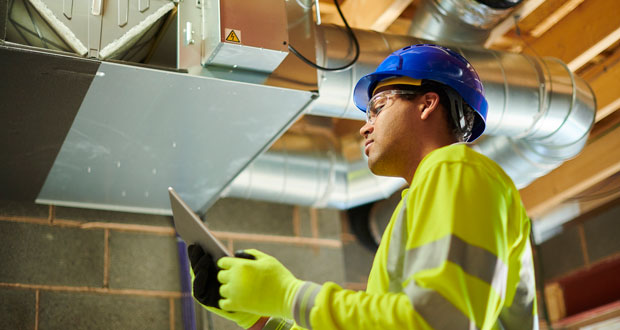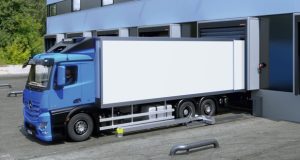Technology is the key to ensuring lone worker safety says Jon Woodforth, Chief Technology Officer at Totalmobile
As the clocks turn back and the nights draw in, the challenges faced by lone workers across the FM sector become even more pronounced. In the darker, colder months, ensuring the safety of those who work alone should be a top priority for employers. As more businesses rely on lone workers to keep essential operations running smoothly, the need for enhanced safety measures becomes even more critical.
Our own analytics at Totalmobile highlight that incidents involving lone workers have surged over the last 12 months. This raises the question: Why do lone workers, many of whom operate in facilities management, require special protection and can technology be the solution that safeguards them?
THE UNIQUE RISKS FACING LONE WORKERS
Lone workers often operate without direct supervision, in isolated or potentially hazardous environments. In FM, these workers may be responsible for maintenance, cleaning, or emergency repairs during night shifts, weekends, or in remote locations. Such roles expose them to a higher risk of accidents, incidents, or medical emergencies, without the immediate support that teams or co-workers can provide.
For instance, consider a lone security guard patrolling a large facility late at night or a maintenance worker dealing with a malfunctioning piece of equipment in a remote part of a building. In both cases, the lack of immediate assistance means that, should an emergency occur, they are at risk of delayed response, which could escalate into a more serious incident.
UK employers are legally obligated to ensure the health, safety, and welfare of all employees, including lone workers. Failure to safeguard lone workers can result in legal penalties, reputational damage, and, most importantly, severe consequences for the workers themselves. Organisations must go beyond basic safety procedures and adopt more sophisticated approaches to ensure their teams’ wellbeing.
HOW TECHNOLOGY IS TRANSFORMING LONE WORKER SAFETY
Advancements in technology are providing employers with the tools they need to safeguard lone workers, with solutions designed to monitor, alert, and protect lone workers in real time.
- Real-time Monitoring and Alerts: Modern lone worker protection systems provide real-time monitoring, allowing supervisors to track their workers’ locations and wellbeing throughout their shifts. These systems often include wearable devices or mobile applications that alert management or can send out notifications to emergency support, ensuring that help is dispatched without delay if a worker is in distress, whether due to a fall, accident, or other emergency.
- Emergency Communication: One of the primary concerns for lone workers is the inability to quickly communicate in an emergency. Tech solutions now offer ‘panic buttons’ or voice-activated systems that workers can use to signal distress. Whether integrated into smartphones or wearables, these devices ensure that workers have an easy and accessible way to call for help when they need it most.
- Geofencing and GPS Tracking: Geofencing technologies allow employers to set virtual boundaries for lone workers, alerting them when a worker leaves a designated area or enters a potentially dangerous zone. This is particularly useful in large facilities or remote sites where certain areas may present higher risks. GPS tracking further ensures that if a lone worker becomes incapacitated or goes missing, their exact location can be pinpointed and help can be sent immediately.
- Incident Reporting and Data Analytics: Another advantage of technological solutions is their ability to track, report, and analyse incidents. Through mobile apps and software, workers can easily log incidents, near misses, or hazards encountered during their shifts. This not only ensures that issues are addressed promptly but also allows employers to gather data and identify trends, enabling more informed decision-making when it comes to workplace safety.
TECHNOLOGY AS A SAFETY STANDARD
While the human element of oversight will always play an essential role in worker safety, technology is fast becoming the gold standard for protecting lone workers. It allows employers to go beyond compliance, offering a proactive approach to safety that is scalable and adaptable. This is particularly relevant for the facilities management industry, where workers often operate across multiple sites, in challenging conditions, and at unsociable hours.
Moreover, these technological solutions offer peace of mind, not only for the workers themselves but also for employers who can rest assured that their teams are safeguarded even when they’re out of sight. By integrating advanced lone worker protection technology, employers demonstrate their commitment to their workforce’s wellbeing, helping to foster a culture of safety and responsibility across the board.
For facilities management, lone worker safety is not just about compliance, it’s about demonstrating a genuine commitment to the safety and wellbeing of the workforce. By embracing modern safety technologies, employers can ensure that they are not only meeting legal obligations but also setting a new standard for lone worker protection.
Ultimately, investing in technology to safeguard lone workers is an investment in the future of the business and its people—a future where safety is at the heart of every operation.





